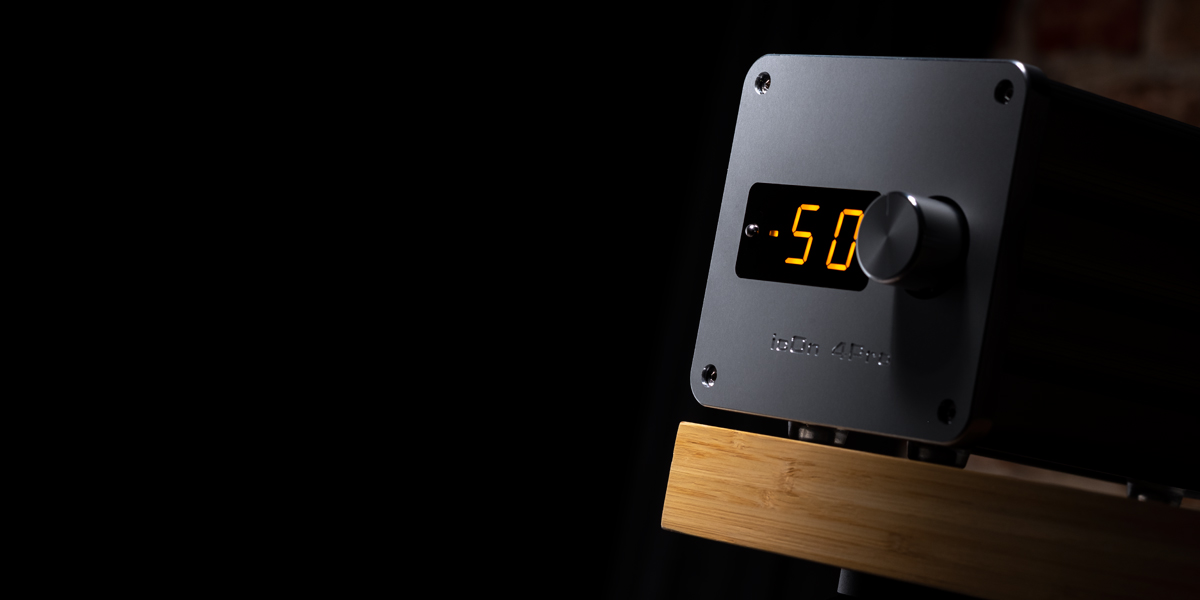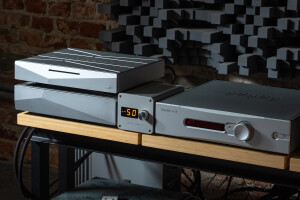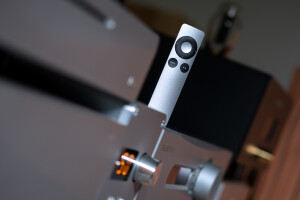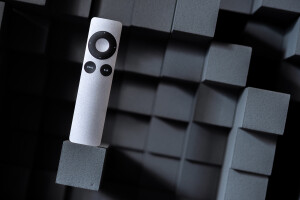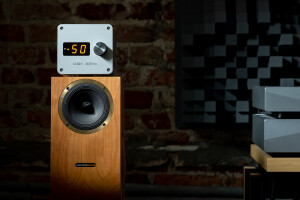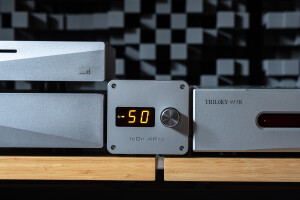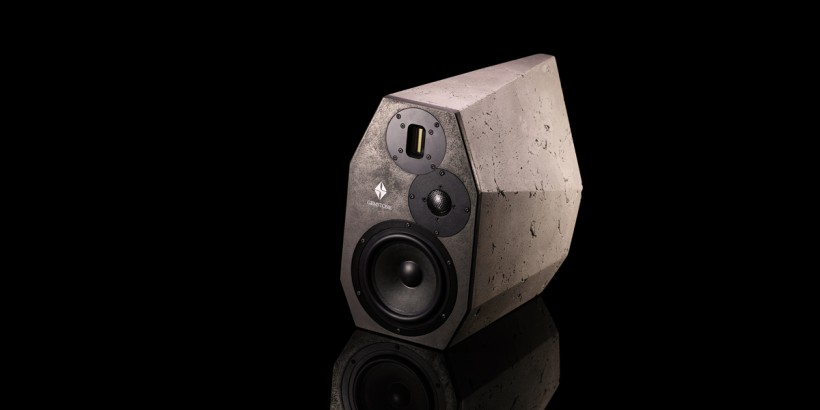In the past I’ve sampled many active preamps, but their passive subdivision eluded me for years. Today’s the day when I can finally cross this breed off my bucket list, the opportunity to investigate its representative baptized icOn 4PRO revealed itself just recently. Enjoy!
Introduction
To move basics out of the way, an active preamp comprises an input selector, attenuator and two powered active circuits; a gain stage to amplify line-level signal from a source over its original voltage, and an output buffer to isolate i/o and keep output impedance low. A passive preamp features only a source selector and attenuation component which trims that signal to a desirable volume and that’s it. There’s no active bits so consequently no voltage boost, but most modern sources output signal powerful enough to drive most amps to their fullest without that extra gain in-between. Effectively passive devices require far fewer means than their active kin to achieve the same fundamental goal.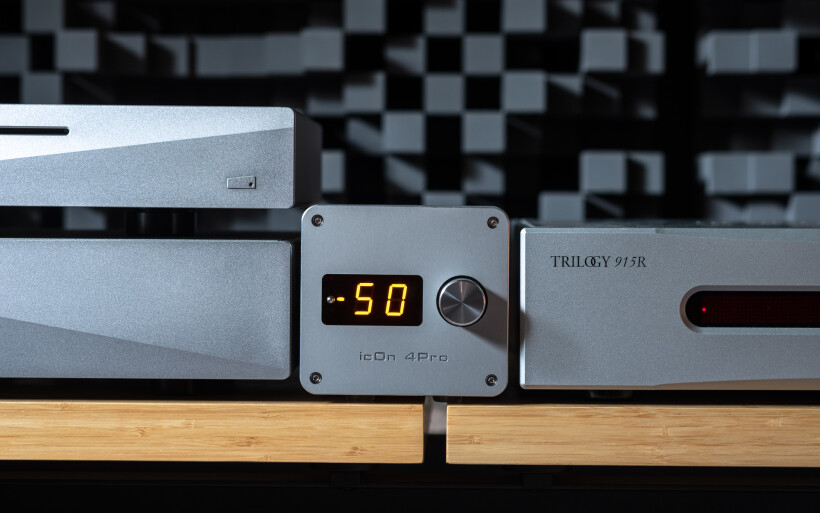 Active preamps can be very costly internally complex products loaded with parts (transistors, tubes, op-amps, output transformers, boutique caps, power supplies etc.) that add sonic flavor. The passive kind free from any such injectors is considered transparent, and its inherent topological minimalism is the key attractor for individuals convinced that in audio less is more if done right. The rough guideline which preamp to pursue thus seems quite straightforward. Should you need one with audible personality and gain to spare, go active. If you desire nothing more than a voiceless signal divider in a box, passive designs fit that profile. To execute this delicate task they incorporate resistive potentiometers and complex stepped attenuators, or magnetic/inductive multi-tapped TVCs (transformer volume control) and AVCs (autoformer volume control). The choice between these components is what makes all the difference, and they also make their way to the active hardware.
Active preamps can be very costly internally complex products loaded with parts (transistors, tubes, op-amps, output transformers, boutique caps, power supplies etc.) that add sonic flavor. The passive kind free from any such injectors is considered transparent, and its inherent topological minimalism is the key attractor for individuals convinced that in audio less is more if done right. The rough guideline which preamp to pursue thus seems quite straightforward. Should you need one with audible personality and gain to spare, go active. If you desire nothing more than a voiceless signal divider in a box, passive designs fit that profile. To execute this delicate task they incorporate resistive potentiometers and complex stepped attenuators, or magnetic/inductive multi-tapped TVCs (transformer volume control) and AVCs (autoformer volume control). The choice between these components is what makes all the difference, and they also make their way to the active hardware.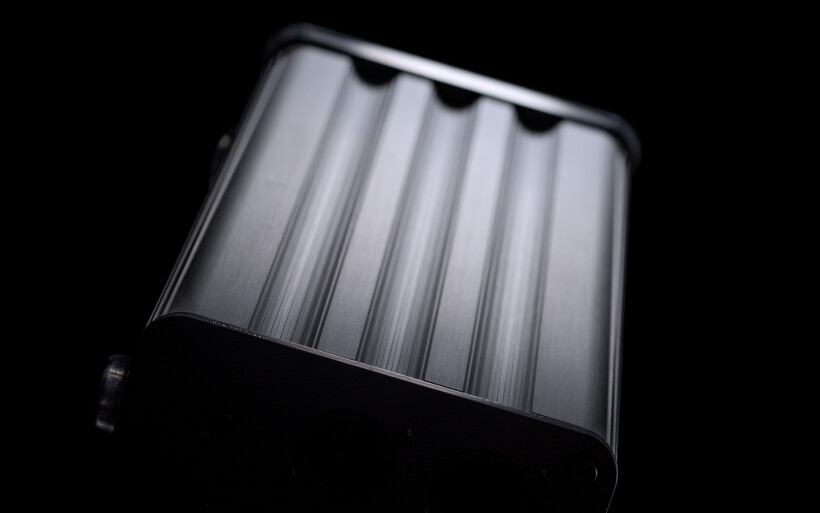 Among products I’ve reviewed most housed simple potentiometers, several featured digitally controlled resistor ladders inside a chip and two relied on their fully exposed boutique versions, but I haven’t yet experienced a machine with its volume control based on TVCs or AVCs. Very few manufacturers follow this costly exotic path, here top shelf preamps by Nagra, Boenicke Audio, Aurorasound or Thrax come to mind. Autoformers inside my Boenicke W11 SE+ speakers to adjust their bass output were the closest I ever got to this technology, and from this Srajan’s review I’ve learned about an affordable passive icOn 4PRO preamp also based on these kosher parts. Its maker Pál Nagy is a Hungarian IT engineer who designed industrial and military electronics for 25 years, and migrated from Budapest to Manchester in 2013 to start a new life there.
Among products I’ve reviewed most housed simple potentiometers, several featured digitally controlled resistor ladders inside a chip and two relied on their fully exposed boutique versions, but I haven’t yet experienced a machine with its volume control based on TVCs or AVCs. Very few manufacturers follow this costly exotic path, here top shelf preamps by Nagra, Boenicke Audio, Aurorasound or Thrax come to mind. Autoformers inside my Boenicke W11 SE+ speakers to adjust their bass output were the closest I ever got to this technology, and from this Srajan’s review I’ve learned about an affordable passive icOn 4PRO preamp also based on these kosher parts. Its maker Pál Nagy is a Hungarian IT engineer who designed industrial and military electronics for 25 years, and migrated from Budapest to Manchester in 2013 to start a new life there.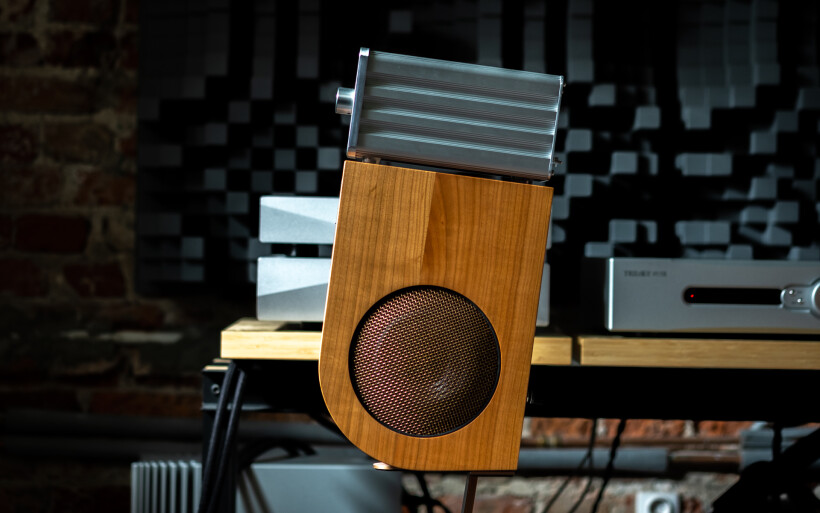 Two years later Pál felt the need to design an audio product, and his source of inspiration was John Chapman’s Bent Audio Tap-X passive pre based on Dave Slagle’s famous autoformers aka “Slagleformers”. This no longer manufactured platform was way ahead its passive competitors on versatility and smarts. Pál’s goal was to revive and update it under his own banner, and that’s how the company Life-Changer Audio UK (established in 2016 with his friend Gary Gardner) and brand icOn came to be. Srajan’s icOn 4PRO story ended with his Blue Moon award, so I had to at least try and hear this product for myself. One mail led to another and a loaner sample was shipped my way.
Two years later Pál felt the need to design an audio product, and his source of inspiration was John Chapman’s Bent Audio Tap-X passive pre based on Dave Slagle’s famous autoformers aka “Slagleformers”. This no longer manufactured platform was way ahead its passive competitors on versatility and smarts. Pál’s goal was to revive and update it under his own banner, and that’s how the company Life-Changer Audio UK (established in 2016 with his friend Gary Gardner) and brand icOn came to be. Srajan’s icOn 4PRO story ended with his Blue Moon award, so I had to at least try and hear this product for myself. One mail led to another and a loaner sample was shipped my way.
Build
A nice matte box housed several foam liners which locked into place the key ingredient inside its soft velour bag. Sundry accessories included a handy manual, standard issue 5V charger and Apple’s pre-paired remote control. Everything necessary was there and the general view was properly orderly. This report’s product isn’t Pál’s introductory effort but the fifth gen. icOn that took five years of R&D. Although that’s the biggest model in his current roster, it measures just (W x H x D) 135 x 130 x 265mm and weighs mere 2.8kg, so effectively takes a fracture of shelf space regular preamps would require. Its further specs reveal 68 volume steps (58x1dB, 9x2dB), +3/-72dB attenuation range, 8V RMS max. input signal, distortion below 0.001%, input impedance of min. 30kΩ, and 20Hz-20kHz FR within +/-0.1dB. 5V/1A DC feed is a must and power consumption is 200mA.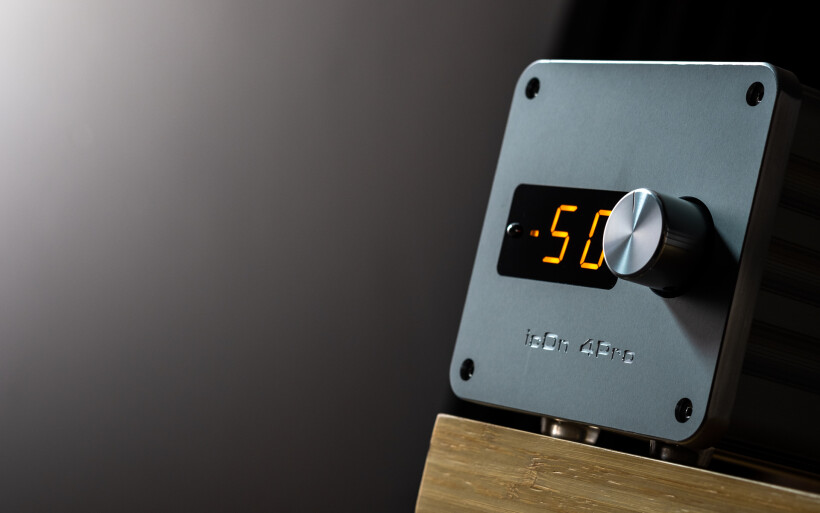 Two brushed plates with a sleeve in-between form the icOn 4PRO’s aluminium enclosure that sits on four rubber footers. It’s made to a high standard and very functional, but not luxurious by any stretch. Pál’s not a jeweler into fancy exteriors and bling, but an engineer who sells sophisticated tech at a reasonable price. The front panel held via four hex screws features an endlessly rotating very fluent knob just next to a black window that shows amber digits. A petite stainless-steel head in that area is a touch sensor that grants access to several functions upon combining its short and long presses; input switching, mute/unmute, night/sleep mode, display brightness and high/low optical encoder sensitivity. Balance and output are selectable only via Apple’s controller. On the back there are two XLR inputs and as many outputs in the same standard, and just below there’s the main on/off knob, 5V DC in, grounding post and update socket, which implies firmware updates without touching the hardware end.
Two brushed plates with a sleeve in-between form the icOn 4PRO’s aluminium enclosure that sits on four rubber footers. It’s made to a high standard and very functional, but not luxurious by any stretch. Pál’s not a jeweler into fancy exteriors and bling, but an engineer who sells sophisticated tech at a reasonable price. The front panel held via four hex screws features an endlessly rotating very fluent knob just next to a black window that shows amber digits. A petite stainless-steel head in that area is a touch sensor that grants access to several functions upon combining its short and long presses; input switching, mute/unmute, night/sleep mode, display brightness and high/low optical encoder sensitivity. Balance and output are selectable only via Apple’s controller. On the back there are two XLR inputs and as many outputs in the same standard, and just below there’s the main on/off knob, 5V DC in, grounding post and update socket, which implies firmware updates without touching the hardware end.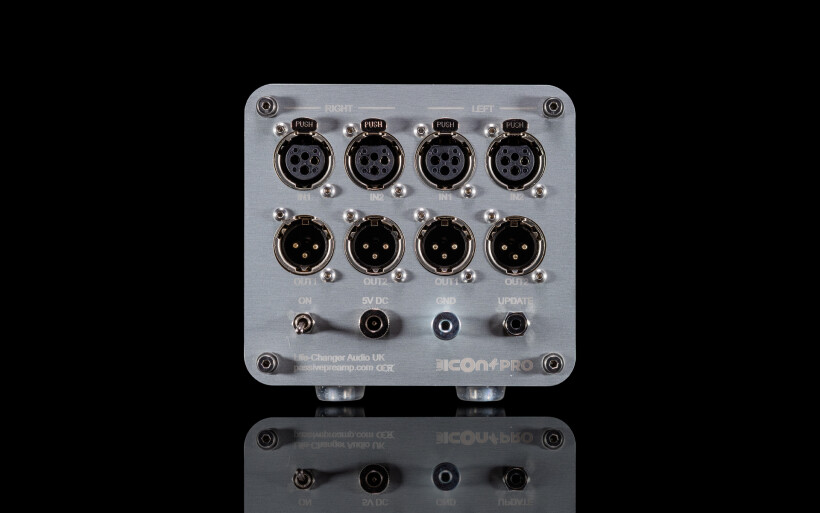 It’s time to address the elephant in the room. Textbook passive preamps operate without power but icOn 4PRO needs it, thus I imagine that fans of the breed would be quick to label it as not the real passive deal. Personally I couldn’t care less. Pál’s product doesn’t feature gain/buffer stages and relies on passively switched autoformer taps to attenuate signal. A purist stepped rotary would make a volume control with 15x 3dB crude leaps not steps. The Hungarian’s MCU not only provides 68 non-linear steps, but also unlocks utmost handy remote control and useful utilities beyond reach of most passive competitors. That’s the fundamental difference. Considering everything this report’s icOn 4PRO does, it feels and operates as conveniently as a regular active pre, except it isn’t one. Kudos to Pál for making his purist passive affair this modern and civilized.
It’s time to address the elephant in the room. Textbook passive preamps operate without power but icOn 4PRO needs it, thus I imagine that fans of the breed would be quick to label it as not the real passive deal. Personally I couldn’t care less. Pál’s product doesn’t feature gain/buffer stages and relies on passively switched autoformer taps to attenuate signal. A purist stepped rotary would make a volume control with 15x 3dB crude leaps not steps. The Hungarian’s MCU not only provides 68 non-linear steps, but also unlocks utmost handy remote control and useful utilities beyond reach of most passive competitors. That’s the fundamental difference. Considering everything this report’s icOn 4PRO does, it feels and operates as conveniently as a regular active pre, except it isn’t one. Kudos to Pál for making his purist passive affair this modern and civilized. The first icOn model used transformers for volume control, but every other specimen that came afterwards had autoformers inside. They’re less complex and feature wider bandwidth, lower ringing and several times less wire than TVCs to execute the same task. On i/o impedance and related hardware compliance autoformers are superior over resistive attenuators, and lack of galvanic separation for inputs and outputs would be their only real con. Moving on, Pál truly dislikes stepped rotaries, so naturally his products had to have something else going on, but he’s also sensitive to any clicking. He was very happy with reed relays for selecting autoformer taps, but on his quest to eliminate this noise completely he had to move towards faster switches, Vishay Fets. Not only they’re fast and quiet, but also linear, exceptionally resilient, and they sit just milimeters away from autoformers so the signal path is very short.
The first icOn model used transformers for volume control, but every other specimen that came afterwards had autoformers inside. They’re less complex and feature wider bandwidth, lower ringing and several times less wire than TVCs to execute the same task. On i/o impedance and related hardware compliance autoformers are superior over resistive attenuators, and lack of galvanic separation for inputs and outputs would be their only real con. Moving on, Pál truly dislikes stepped rotaries, so naturally his products had to have something else going on, but he’s also sensitive to any clicking. He was very happy with reed relays for selecting autoformer taps, but on his quest to eliminate this noise completely he had to move towards faster switches, Vishay Fets. Not only they’re fast and quiet, but also linear, exceptionally resilient, and they sit just milimeters away from autoformers so the signal path is very short.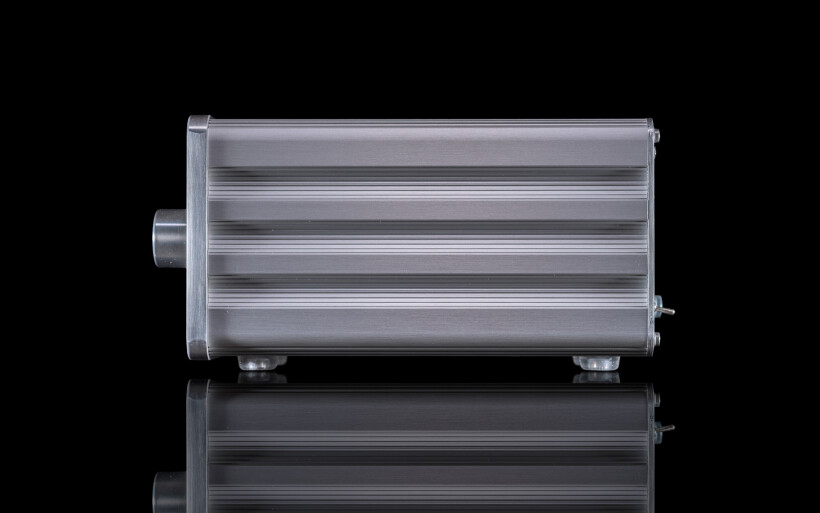 As far as utilities go, the icOn 4PRO did very well and was comparable to my 915R linestage, however on clicking and self noise it was in fact superior. If it weren’t for its display, I wouldn’t be able to tell whether this passive specimen was on or off. I haven’t yet guested a preamp this quiet. Its volume knob connected to an optical encoder worked very fluently, and in complete silence it moved up and down as fast and responsive as I wanted. On Apple’s RC I didn’t have to cycle through each individual step to increase/decrease volume, upon constantly pressing associated buttons it ramped up/down all the way and that’s exactly how it should be. All in all, icOn 4PRO struck me as very polished and buttoned up, and now’s the time to find out whether it can keep up on performance.
As far as utilities go, the icOn 4PRO did very well and was comparable to my 915R linestage, however on clicking and self noise it was in fact superior. If it weren’t for its display, I wouldn’t be able to tell whether this passive specimen was on or off. I haven’t yet guested a preamp this quiet. Its volume knob connected to an optical encoder worked very fluently, and in complete silence it moved up and down as fast and responsive as I wanted. On Apple’s RC I didn’t have to cycle through each individual step to increase/decrease volume, upon constantly pressing associated buttons it ramped up/down all the way and that’s exactly how it should be. All in all, icOn 4PRO struck me as very polished and buttoned up, and now’s the time to find out whether it can keep up on performance.
Sound
The Innuos Statement handled storage/transport, then a LessLoss Echo’s End Reference DAC passed signal to either a Trilogy 915R linestage or icOn 4PRO connected to Trilogy 995R monos, and these via Boenicke S3 speaker cables either to sound|kaos Vox 3afw, Boenicke W11 SE+ or Cube Audio Nenuphar Mini speakers. Interconnects used were three XLR sets I DIY-ed. All key hardware was powered by Boenicke Audio Power Gate distributor box plus its three captive M2 cords and two LessLoss C-MARCs. The USB chain included only one Mercury3.0 USB cable. A set of external LessLoss Firewall for Loudspeakers modules complimented all speaker sets, while a Fidelizer EtherStream was in-between my Linksys WRT160N router and Innuos Statement server. A GigaWatt PC-3 SE EVO+ power conditioner fronted by its own LC-3 EVO cable fed ISOL-8’s Prometheus PSU connected to the router and network switch.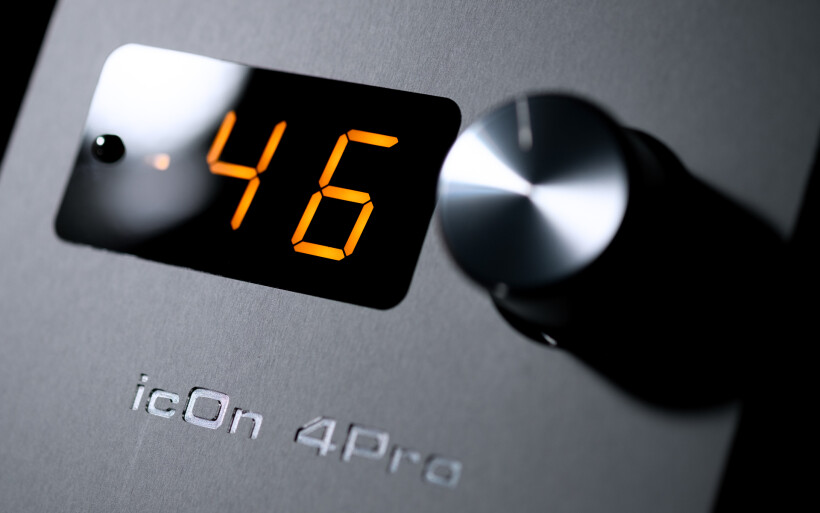 The firm idea how to handle today’s product was born long before its arrival. This fully balanced design was fit to work with topologically alike 995R mono amps, however my single-ended LampizatOr Pacific DAC had to be off duty this time around. Upon asking nicely Louis Motek of LessLoss kindly extended his loan of the Echo’s End Reference machine recently reviewed here, so effectively I had my test bench balanced front to back. The icOn 4PRO powered by a switching 5V charger at first had sensible static on its enclosure, followed by prickly irregular noise audible on speakers. Both these common issues implied no Earth which iFi audio’s AC iPurifier and Groundhog instantly added. From this point onward Pál’s passive pre didn’t cause any trouble at all.
The firm idea how to handle today’s product was born long before its arrival. This fully balanced design was fit to work with topologically alike 995R mono amps, however my single-ended LampizatOr Pacific DAC had to be off duty this time around. Upon asking nicely Louis Motek of LessLoss kindly extended his loan of the Echo’s End Reference machine recently reviewed here, so effectively I had my test bench balanced front to back. The icOn 4PRO powered by a switching 5V charger at first had sensible static on its enclosure, followed by prickly irregular noise audible on speakers. Both these common issues implied no Earth which iFi audio’s AC iPurifier and Groundhog instantly added. From this point onward Pál’s passive pre didn’t cause any trouble at all.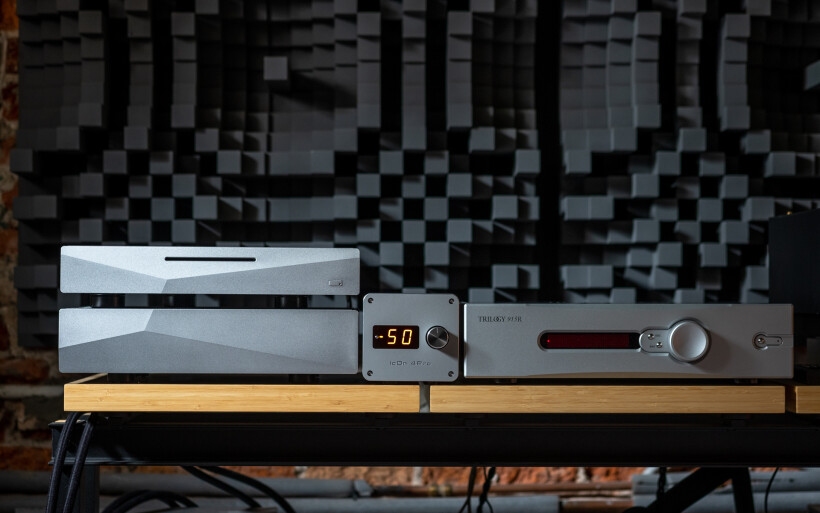 icOn 4PRO’s natural habitat was right in-between the LessLoss and my monos, so it had to fight with Trilogy’s six times dearer 915R linestage also used at this juncture. The latter in control of 995R amps via Nic Poulson’s own TASlink interface turns on all three his reference components via one button press, displays status of their tubes, remotely switches between class A/AB biases without pushing buttons on each amp’s rear, upon demand keeps everything warm, and so on so forth. Naturally by replacing the 915R with the icOn all these useful features were lost, and so was the Brit’s fancier enclosure and more serious look. The icOn retaliated on a way lower asking price, smaller footprint that naturally occupied far less shelf space, and dead silence. With the 915R in my system, sensitive loads by Cube Audio and sound|kaos reported mild uniform background noise audible from the listening chair. Although it fades away when the music’s on so isn’t an issue, Pál’s preamp squeaky clean on this specific count left me with the impression of my setup not powered on. I have to admit that I appreciated this change.
icOn 4PRO’s natural habitat was right in-between the LessLoss and my monos, so it had to fight with Trilogy’s six times dearer 915R linestage also used at this juncture. The latter in control of 995R amps via Nic Poulson’s own TASlink interface turns on all three his reference components via one button press, displays status of their tubes, remotely switches between class A/AB biases without pushing buttons on each amp’s rear, upon demand keeps everything warm, and so on so forth. Naturally by replacing the 915R with the icOn all these useful features were lost, and so was the Brit’s fancier enclosure and more serious look. The icOn retaliated on a way lower asking price, smaller footprint that naturally occupied far less shelf space, and dead silence. With the 915R in my system, sensitive loads by Cube Audio and sound|kaos reported mild uniform background noise audible from the listening chair. Although it fades away when the music’s on so isn’t an issue, Pál’s preamp squeaky clean on this specific count left me with the impression of my setup not powered on. I have to admit that I appreciated this change.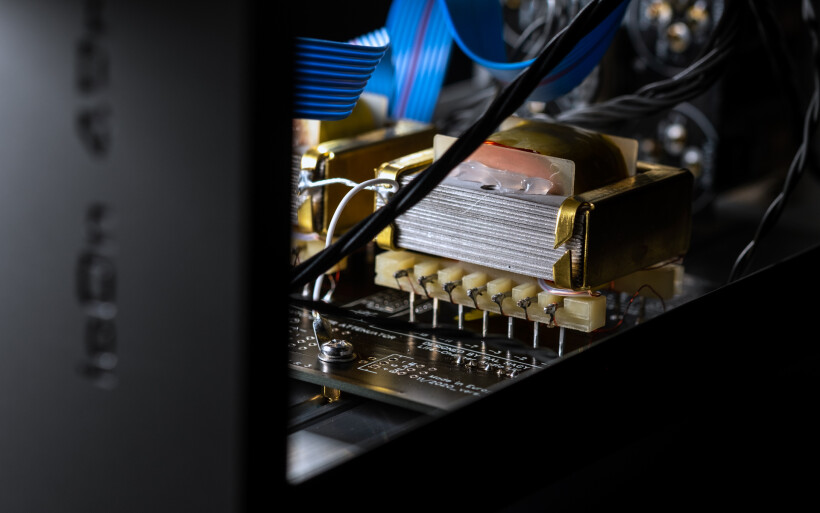 Swaps between the 915R and icOn 4PRO were a quick easy job that required reconnecting two pairs of XLRs and nothing more. The latter product had to show the value of roughly -13 on its display to match the rival’s -27dB and achieve the same SPL. Although this review is my first assignment that includes passive volume control so I shouldn’t have any firm expectations, after several chats with colleagues about this breed I’d learnt about its thin and frosty so rather situational nature; good for thick syrupy companions, meh for everything else. Transparency was also mentioned once or twice, and with three sets of XLRs at my disposal I had just the plan how to move this subject out of the way first. Besides, any starting point seemed good considering how unfamiliar the passive territory was for me.
Swaps between the 915R and icOn 4PRO were a quick easy job that required reconnecting two pairs of XLRs and nothing more. The latter product had to show the value of roughly -13 on its display to match the rival’s -27dB and achieve the same SPL. Although this review is my first assignment that includes passive volume control so I shouldn’t have any firm expectations, after several chats with colleagues about this breed I’d learnt about its thin and frosty so rather situational nature; good for thick syrupy companions, meh for everything else. Transparency was also mentioned once or twice, and with three sets of XLRs at my disposal I had just the plan how to move this subject out of the way first. Besides, any starting point seemed good considering how unfamiliar the passive territory was for me.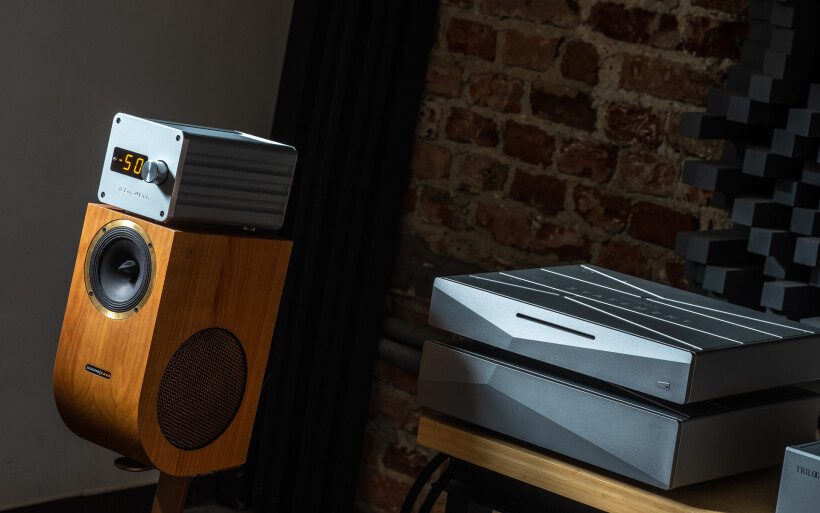 The signal from the LessLoss went to my 915R, then to the icOn set at 0dB, and finally to Trilogy’s 995R monos. Their XLRs reconnected to either my linestage directly, or the passive loaner in-between so I could map what it did effectively used as a buffer box. I gave the four-piece setup as described a quick listen, then after a while the icOn was bypassed, and then this rotation was repeated many times over. After about a dozen of such swaps I thought that Pál’s component included in the chain resulted in a tad softer outlines, but other than that I had nothing firm. Besides, this one variable was too subtle to hold on to it anyway. Past all triangulations I honestly couldn’t tell when was the last time I’ve guested an audio product this elusive about its input. Heck, even accessories such as cables or decouplers revealed their action far quicker.
The signal from the LessLoss went to my 915R, then to the icOn set at 0dB, and finally to Trilogy’s 995R monos. Their XLRs reconnected to either my linestage directly, or the passive loaner in-between so I could map what it did effectively used as a buffer box. I gave the four-piece setup as described a quick listen, then after a while the icOn was bypassed, and then this rotation was repeated many times over. After about a dozen of such swaps I thought that Pál’s component included in the chain resulted in a tad softer outlines, but other than that I had nothing firm. Besides, this one variable was too subtle to hold on to it anyway. Past all triangulations I honestly couldn’t tell when was the last time I’ve guested an audio product this elusive about its input. Heck, even accessories such as cables or decouplers revealed their action far quicker.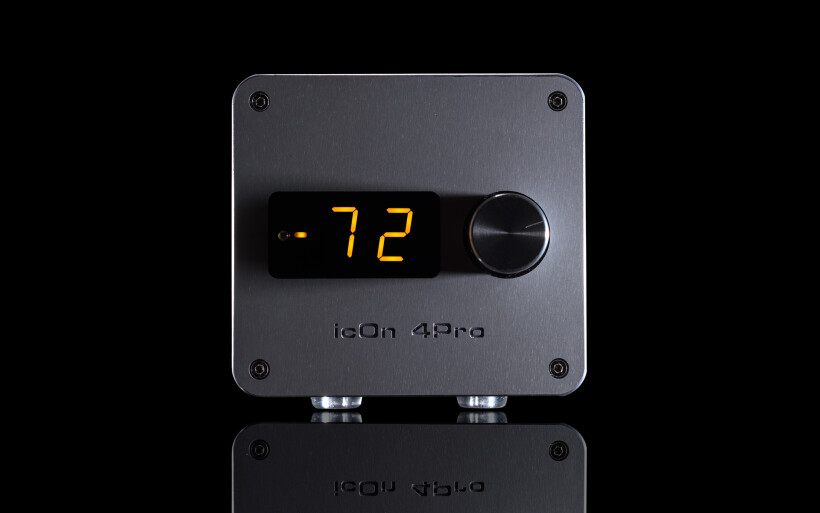 Long story short, the icOn in-between my linestage and monos was just an invisible bystander that didn’t break, fix or change anything specific audibly enough to consider its work any meaningful, or quite frankly noticeable. Even if it did something, my senses simply failed to grasp it. This alone was telling, the ability to just be a part of a setup without influencing its sonics in any way in particular is, by my standards of course, the very definition of transparency. After all feedback gathered from fellow enthusiasts I expected the icOn used as a buffer to at least gently steer my system’s gestalt into a more illuminated skinnier speedier direction, however no such thing had happened. Upon using this passive pre instead of my 915R I quickly understood that its MO was far more sophisticated than just that, but prior to going any further some extra context is needed.
Long story short, the icOn in-between my linestage and monos was just an invisible bystander that didn’t break, fix or change anything specific audibly enough to consider its work any meaningful, or quite frankly noticeable. Even if it did something, my senses simply failed to grasp it. This alone was telling, the ability to just be a part of a setup without influencing its sonics in any way in particular is, by my standards of course, the very definition of transparency. After all feedback gathered from fellow enthusiasts I expected the icOn used as a buffer to at least gently steer my system’s gestalt into a more illuminated skinnier speedier direction, however no such thing had happened. Upon using this passive pre instead of my 915R I quickly understood that its MO was far more sophisticated than just that, but prior to going any further some extra context is needed. Trilogy’s 915R/995R set biased deep into class A has its own strongly pronounced flavor that finely blends richness, textural juiciness, gravity and generously developed muscle tissue with fantastic openness, insight, articulation, speed and overall might. In comparison to say amps quick and precise it doesn’t feel slow or fuzzy at all, and it easily keeps up with those geared for color, charm and sensuality. Trilogy’s three-piece set is very expensive mainly because it offers the full sonic care package without any obvious weak links. I’m sure that there is hardware out there that would unlock sensibly faster drive, harder hits, greater control, even more enchanting profile, grander imaging or stronger pronunciation. However, at this time I’m not able to single out one specific base which Trilogy’s reference set wouldn’t cover as thoroughly as all remaining ones. Here the 915R greatly contributes to its imaging size, impact, feistiness, oxygenation and moisture, so in that sense it nicely boosts the two 995Rs’ performance and bonds everything together.
Trilogy’s 915R/995R set biased deep into class A has its own strongly pronounced flavor that finely blends richness, textural juiciness, gravity and generously developed muscle tissue with fantastic openness, insight, articulation, speed and overall might. In comparison to say amps quick and precise it doesn’t feel slow or fuzzy at all, and it easily keeps up with those geared for color, charm and sensuality. Trilogy’s three-piece set is very expensive mainly because it offers the full sonic care package without any obvious weak links. I’m sure that there is hardware out there that would unlock sensibly faster drive, harder hits, greater control, even more enchanting profile, grander imaging or stronger pronunciation. However, at this time I’m not able to single out one specific base which Trilogy’s reference set wouldn’t cover as thoroughly as all remaining ones. Here the 915R greatly contributes to its imaging size, impact, feistiness, oxygenation and moisture, so in that sense it nicely boosts the two 995Rs’ performance and bonds everything together.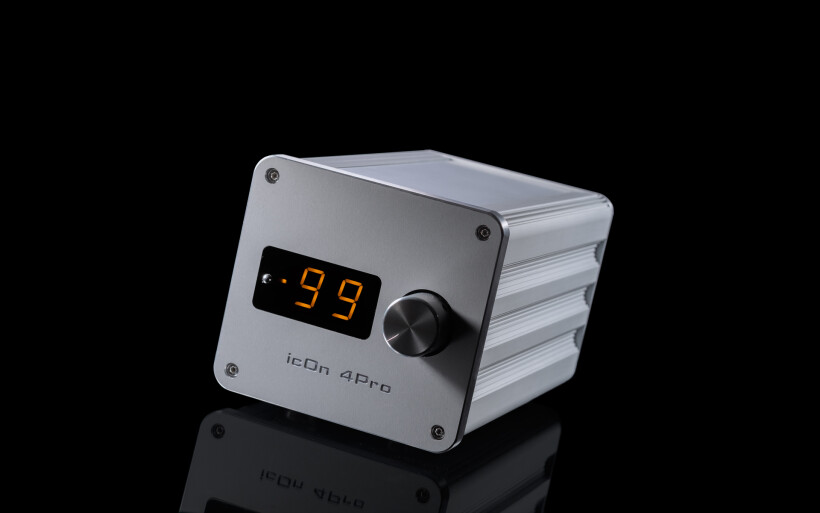 This report’s loaner now had to go directly against my linestage. Considering the former’s far lower cost I expected the usual scenario where past a number of mandatory auditions I gladly revert to my own hardware. Not today. The icOn 4PRO meant some serious business and was very vocal about that right from the start. Upon using it in my setup for the first time I was ready for drier skinnier sharper sonics, but this wasn’t the case at all. Affordable products stacked against costlier competitors often reveal less developed aspects as early as during introductory courtesies, but Pál’s design didn’t. Although noticeably leaner and more outlined versus the 915R, it wasn’t any smaller on imaging, texturally pale, nervous, wimpy or grainy. All its thoroughly sorted fundamentals produced suspiciously complete and mature result that marked a splendid start.
This report’s loaner now had to go directly against my linestage. Considering the former’s far lower cost I expected the usual scenario where past a number of mandatory auditions I gladly revert to my own hardware. Not today. The icOn 4PRO meant some serious business and was very vocal about that right from the start. Upon using it in my setup for the first time I was ready for drier skinnier sharper sonics, but this wasn’t the case at all. Affordable products stacked against costlier competitors often reveal less developed aspects as early as during introductory courtesies, but Pál’s design didn’t. Although noticeably leaner and more outlined versus the 915R, it wasn’t any smaller on imaging, texturally pale, nervous, wimpy or grainy. All its thoroughly sorted fundamentals produced suspiciously complete and mature result that marked a splendid start.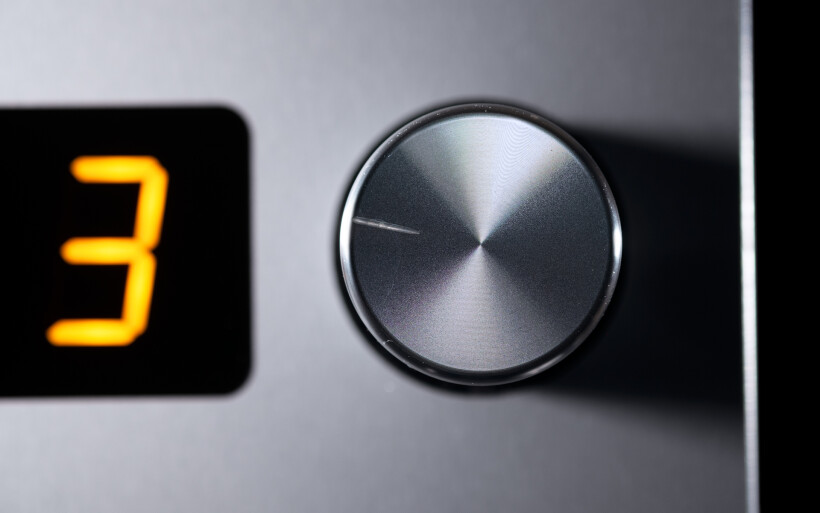 The icOn 4PRO in my setup quickly introduced itself as naturally aspirated for top shelf imaging specificity, layering complexity, articulation, immediacy, speed and freshness, and all these traits translated into lots of air around virtual sound sources, their utmost precisely sketched fames and direct overall delivery. This aroma naturally biased towards insight often arrives at a fixed price paid in moisture, muscularity, thickness, smoothness and bass reach, but today’s subject felt highly coherent, balanced and pleasantly organic. Nothing about its performance was gritty, sharp, itchy or abnormally zealous. Neither it sounded thin, nor lifeless, matte, hollow or crippled in any way in particular. The icOn 4PRO’s blend of virtues and avoidance of downsides typical for its voicing spelled out admirable seasoning certainly way above its asking price.
The icOn 4PRO in my setup quickly introduced itself as naturally aspirated for top shelf imaging specificity, layering complexity, articulation, immediacy, speed and freshness, and all these traits translated into lots of air around virtual sound sources, their utmost precisely sketched fames and direct overall delivery. This aroma naturally biased towards insight often arrives at a fixed price paid in moisture, muscularity, thickness, smoothness and bass reach, but today’s subject felt highly coherent, balanced and pleasantly organic. Nothing about its performance was gritty, sharp, itchy or abnormally zealous. Neither it sounded thin, nor lifeless, matte, hollow or crippled in any way in particular. The icOn 4PRO’s blend of virtues and avoidance of downsides typical for its voicing spelled out admirable seasoning certainly way above its asking price.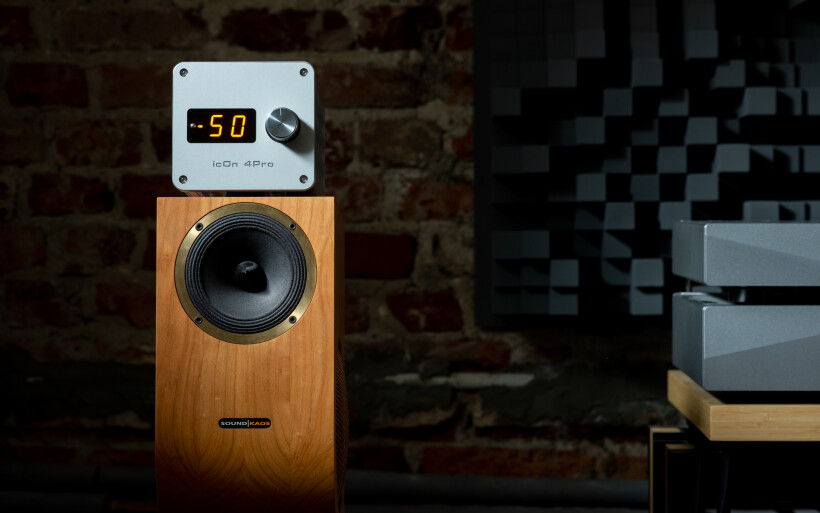 If upon spending several weeks with a product it doesn’t give away any underperforming aspects to instead lock my focus solely on music, that’s a job done well. Pál’s passive box followed accordingly, not for a second I’d entertained the possibility of it being voiced any differently to perhaps fit my taste and setup more. Although that alone was a treat considering the icOn 4PRO’s retail price, the most important discovery was found elsewhere. The more the two preamps exchanged blows, the more I looked forward to hits that would mark my linestage as the superior specimen, but this wasn’t meant to be. Although both contestants had their priority lists organized differently, on sheer performance excellence they were equals. The at first disturbing price gap between them quickly became irrelevant in effect.
If upon spending several weeks with a product it doesn’t give away any underperforming aspects to instead lock my focus solely on music, that’s a job done well. Pál’s passive box followed accordingly, not for a second I’d entertained the possibility of it being voiced any differently to perhaps fit my taste and setup more. Although that alone was a treat considering the icOn 4PRO’s retail price, the most important discovery was found elsewhere. The more the two preamps exchanged blows, the more I looked forward to hits that would mark my linestage as the superior specimen, but this wasn’t meant to be. Although both contestants had their priority lists organized differently, on sheer performance excellence they were equals. The at first disturbing price gap between them quickly became irrelevant in effect.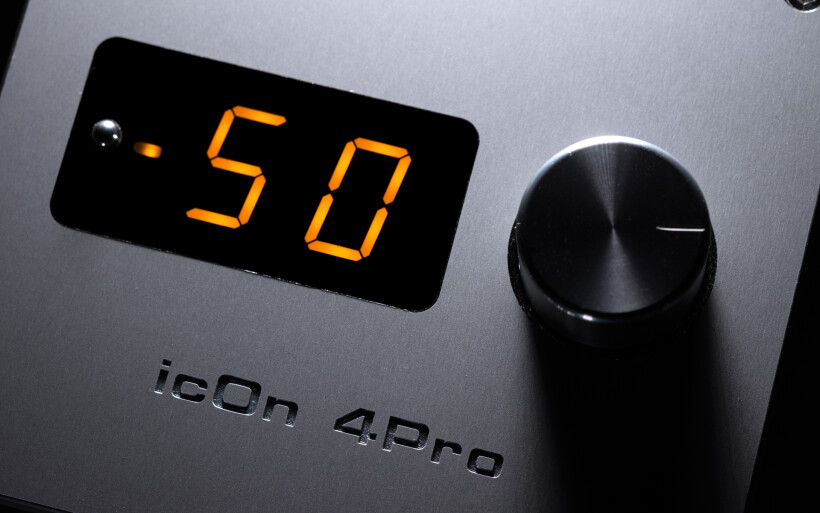 The icOn 4PRO projected more oxygenated and specific landscapes with virtual shapes outlined stronger thus clearer and more direct, whilst its tighter grasp on bass rendered it shorter and a touch more agile for effectively an intense and exciting overall experience. The 915R had its downstairs bloomier, rounder and meatier, its more diffused mildly foggy spatial images felt in a way sensibly more atmospheric and massive, and key sound sources more liberally connected in there had their frames thicker, which netted more relaxed and voluptuous presentation. This meta shift from radiance, illumination and directness to a touch darker, slower and picturesque general vibe was very clear. Although slimmer and more energized in this context, the 4PRO was also fabulously hydrated, vibrant, alive and not shy on tone at all, which is why it left no room for any craves related to color, texturing or substance. On these fronts it didn’t feel behind the 915R at all, just different. Interestingly, prior to the icOn’s arrival I wouldn’t label Trilogy’s pre as any dark or romantic per se, but in today’s comparison it was to a degree.
The icOn 4PRO projected more oxygenated and specific landscapes with virtual shapes outlined stronger thus clearer and more direct, whilst its tighter grasp on bass rendered it shorter and a touch more agile for effectively an intense and exciting overall experience. The 915R had its downstairs bloomier, rounder and meatier, its more diffused mildly foggy spatial images felt in a way sensibly more atmospheric and massive, and key sound sources more liberally connected in there had their frames thicker, which netted more relaxed and voluptuous presentation. This meta shift from radiance, illumination and directness to a touch darker, slower and picturesque general vibe was very clear. Although slimmer and more energized in this context, the 4PRO was also fabulously hydrated, vibrant, alive and not shy on tone at all, which is why it left no room for any craves related to color, texturing or substance. On these fronts it didn’t feel behind the 915R at all, just different. Interestingly, prior to the icOn’s arrival I wouldn’t label Trilogy’s pre as any dark or romantic per se, but in today’s comparison it was to a degree.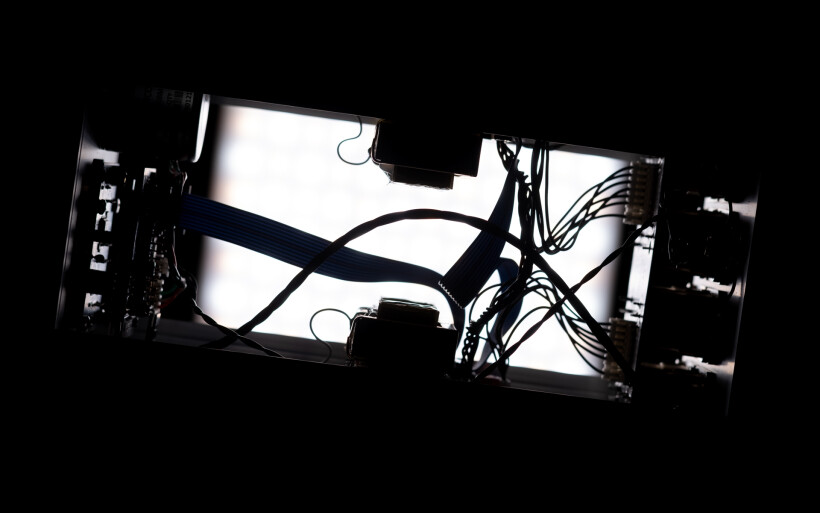 Although I had only one setup at my disposal, the icOn 4PRO’s perfect synergy with it made sense. LessLoss’ second best DAC and my 995R monos biased into class A lean towards color and mood a fair bit more than insight, precision and feistiness, so Pál’s quite oppositely profiled passive critter was destined to work well in there. In this specific environment it was the better fit that made more balanced and articulate sound than its rival, but without paying up in any critical assets and that made all the difference. Speaker sets used to evaluate the icOn 4PRO didn’t really matter either, each merely showed how distinctly apart its flavor was from the 915R’s own. But then again, who knows? Perhaps the latter would have its revenge upon replacing the LessLoss with the Pacific DAC geared for quickness, sun and openness? Perhaps it wouldn’t? I couldn’t tell, but past getting familiar with the icOn 4PRO I wouldn’t risk any guesses. This wonderful top shelf performer not only features a mixture of traits I haven’t yet heard this pronounced in such a product, but it also flourished into the Bakoon of the preamplifier realm and even struck me as similarly voiced.
Although I had only one setup at my disposal, the icOn 4PRO’s perfect synergy with it made sense. LessLoss’ second best DAC and my 995R monos biased into class A lean towards color and mood a fair bit more than insight, precision and feistiness, so Pál’s quite oppositely profiled passive critter was destined to work well in there. In this specific environment it was the better fit that made more balanced and articulate sound than its rival, but without paying up in any critical assets and that made all the difference. Speaker sets used to evaluate the icOn 4PRO didn’t really matter either, each merely showed how distinctly apart its flavor was from the 915R’s own. But then again, who knows? Perhaps the latter would have its revenge upon replacing the LessLoss with the Pacific DAC geared for quickness, sun and openness? Perhaps it wouldn’t? I couldn’t tell, but past getting familiar with the icOn 4PRO I wouldn’t risk any guesses. This wonderful top shelf performer not only features a mixture of traits I haven’t yet heard this pronounced in such a product, but it also flourished into the Bakoon of the preamplifier realm and even struck me as similarly voiced.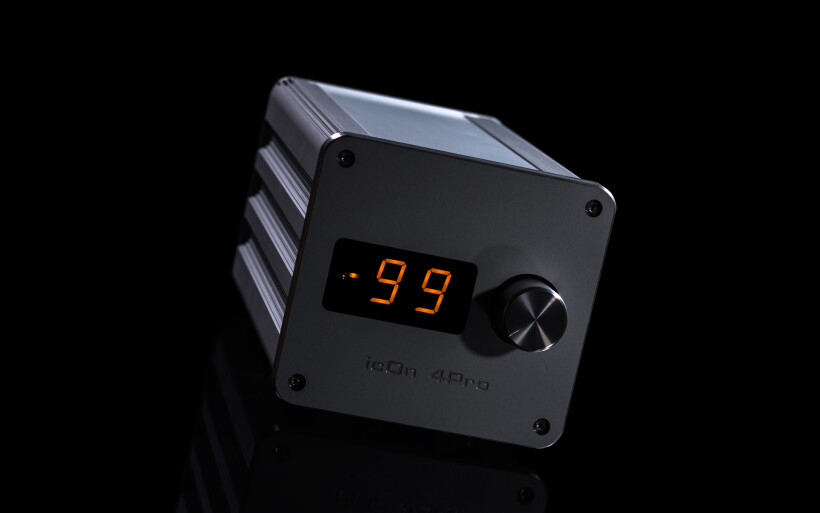 The icOn 4PRO as described above relied solely on the PSU provided by its maker, but I couldn’t resist investigating its responsiveness to any changes on this front. I’m glad that I didn’t, Pál’s product scaled well with a higher-tiered 5V feed. Its stock charger replaced with iFi audio’s iPower resulted in a mild boost to imaging specificity and bass control, however tissue complexity and tonal weight remained intact and that was unusual. The more potent noise rejection is, the more these two aspects lean towards darker heftier sonics. This aside, the small performance increase with the iPower on duty was perceptible enough to appreciate it, especially considering how much iFi charges for this PSU, but ISOL-8’s Prometheus did substantially more. It also didn’t touch the passive pre’s tonal balance and saturation, but produced more slamming, powerful and tighter bass that clearly spelled out noticeable improvements. Backdrop behind instruments and voices also became blacker to effectively outline these virtual shapes even finer than before, and land more orderly posher general view. Although listed changes weren’t drastic in the grand scheme, their easily audible thoroughly beneficial nature was more than enough to justify the linear expense. This report’s stout performer surely deserves such a treatment.
The icOn 4PRO as described above relied solely on the PSU provided by its maker, but I couldn’t resist investigating its responsiveness to any changes on this front. I’m glad that I didn’t, Pál’s product scaled well with a higher-tiered 5V feed. Its stock charger replaced with iFi audio’s iPower resulted in a mild boost to imaging specificity and bass control, however tissue complexity and tonal weight remained intact and that was unusual. The more potent noise rejection is, the more these two aspects lean towards darker heftier sonics. This aside, the small performance increase with the iPower on duty was perceptible enough to appreciate it, especially considering how much iFi charges for this PSU, but ISOL-8’s Prometheus did substantially more. It also didn’t touch the passive pre’s tonal balance and saturation, but produced more slamming, powerful and tighter bass that clearly spelled out noticeable improvements. Backdrop behind instruments and voices also became blacker to effectively outline these virtual shapes even finer than before, and land more orderly posher general view. Although listed changes weren’t drastic in the grand scheme, their easily audible thoroughly beneficial nature was more than enough to justify the linear expense. This report’s stout performer surely deserves such a treatment.
Summary
Although affordable audio products often throw punches far above their stickers, those fully capable of going toe to toe with say five times dearer competitors are pretty much non-existent unicorn designs. Thus far a Bakoon AMP-13R was listed in my roster as the only specimen truly fit for such enormous challenges. It’s not alone any longer, Pál Nagy’s icOn 4PRO fits that rare profile as well.
One quick glimpse at icOn 4PRO is all it takes to understand that fancy casework, bling and visual seriousness weren’t on its maker’s priority list, on the contrary to rapid responsiveness, short signal path, silent MO, flawless execution and convenient utilities beyond reach of the orthodox passive breed. Today’s properly modern enjoyably petite marvel in effect feels and behaves just like a regular active preamp, but takes far less space and is far quieter than most on background noise, which sensitive speakers will appreciate. Although it struck me as polished thoroughly enough to leave no room for complaints, how it exceled at its core job left me puzzled.
Just as the Bakoon before it, icOn 4PRO is the same kind of monster I’d gladly throw against any functionally similar hardware with a mischievous grin on my face, and I’m sure that most such fights it would win. I’m clueless what sort of means would it take to clearly outshine this inconspicuously dressed aggressively priced package. As far as sheer sonic excellence, maturity and completeness go, it sits as high as my reference linestage that now sells for roughly £17’000 before VAT and is the best one I know, okay? That’s why if you’re in the market for a preamp and don’t intend to purposely inject chunky syrupy flavor into your system, auditioning icOn 4PRO prior to anything else is my best advice. ‘Til next time!
Associated Equipment:
- Amplifier: Trilogy 995R
- DAC: LessLoss Echo’s End Reference
- Speakers: Boenicke Audio W11 SE+, sound|kaos Vox 3afw, Cube Audio Nenuphar Mini
- Transport: Innuos Statement
- Preamplifier: Trilogy 915R
- Speaker cables: Boenicke Audio S3, LessLoss C-MARC
- Speaker signal conditioning: LessLoss Firewall for Loudspeakers
- Interconnects: DIY XLRs
- Power components: Gigawatt PC-3 SE EVO+/LC-3 EVO, LessLoss C-MARC, Boenicke Audio Power Gate, ISOL-8 Prometheus
- USB components: iFi audio Mercury3.0
- Rack: Franc Audio Accesories Wood Block Rack
- Network: Fidelizer EtherStream, Linksys WRT160N
- Music: NativeDSD
Retail prices of reviewed components in EU (excl. tax):
- icOn 4PRO: £2’999
Manufacturer: Life-Changer Audio UK


